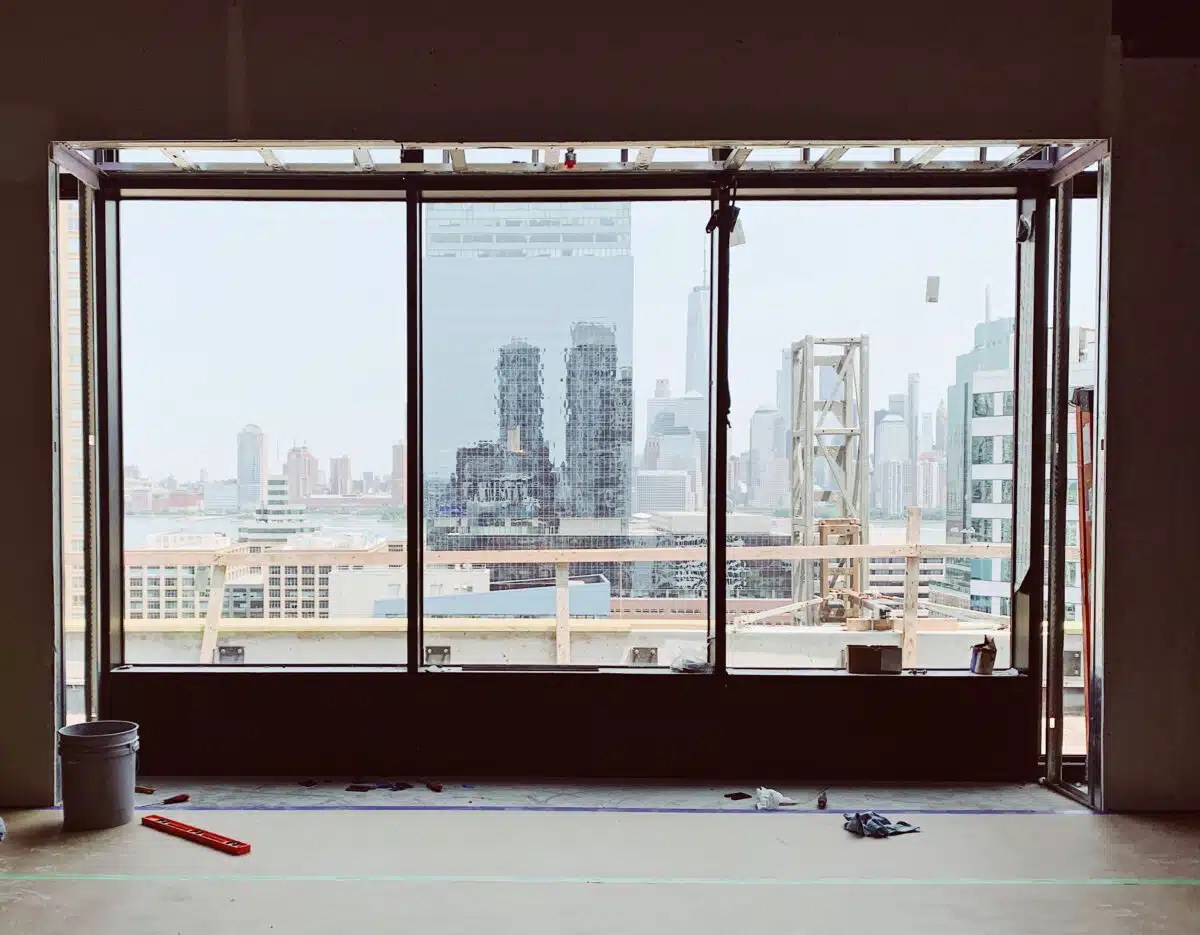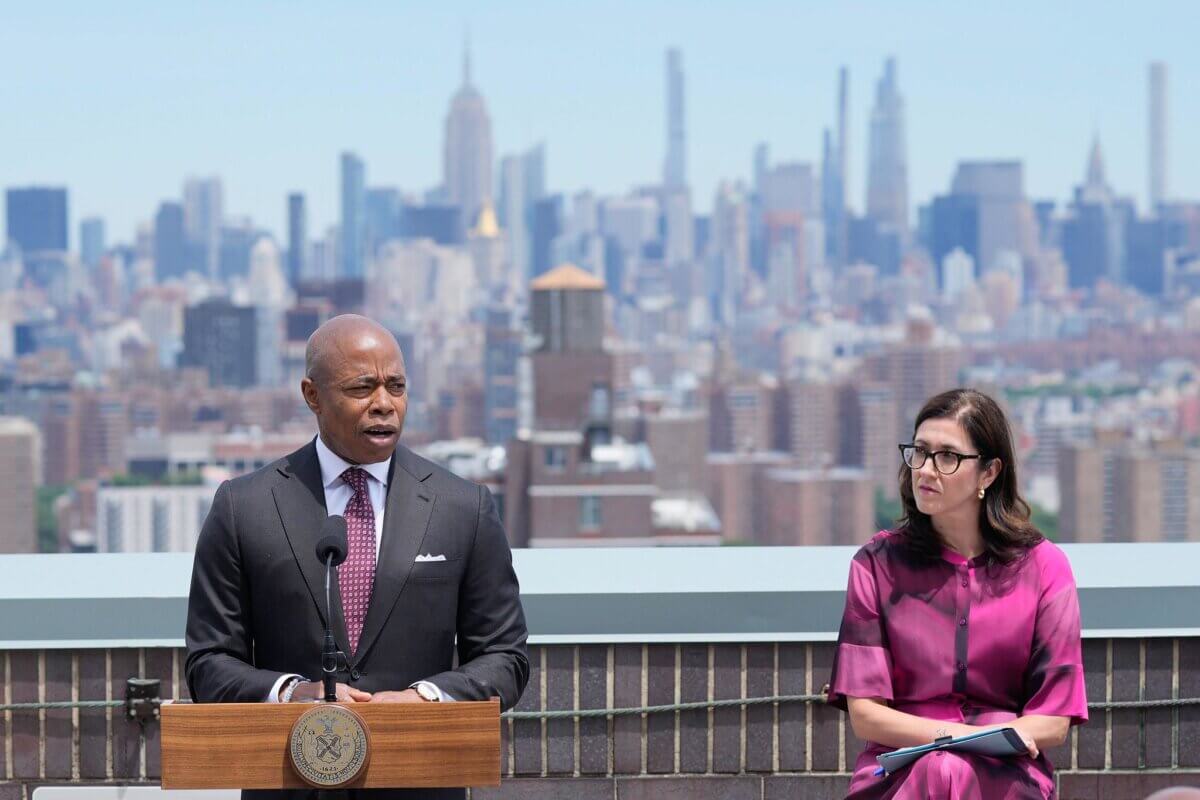Now, I'm unsure how many asylum seekers are taking up space

Photo via Getty Images
Available apartments are the scarcest they have been in the Big Apple since 1968, according to a newly released city housing and vacancy survey — something which the Adams administration says highlights the desperate need to quickly build far more housing.
The “New York City Housing and Vacancy Survey” (NYCHVS), as the study is called, found that just 1.4% of the city’s 2.3 million apartments were available to rent last year. The data was gathered in 2023 between January and June and is based upon nearly 10,000 interviews with residents.
The survey is released roughly every three years and conducted by the city Department of Housing Preservation and Development (HPD) and the U.S. Census Bureau.
HPD delivered the findings to the City Council early Thursday evening.
Mayor Eric Adams has spent much of his first two years in office making the case for building more housing as a means of addressing the dwindling supply of rental units, skyrocketing rents and rampant homelessness. Earlier this week, he traveled to Albany to plead with state lawmakers to take several actions this legislative session that he says would let the city build more housing.
Adams, in a Thursday statement, said that the survey’s findings only underscore his case for greatly boosting housing production, while urging “all levels of government” to pitch in.
“The data is clear: the demand to live in our city is far outpacing our ability to build housing. New Yorkers need our help, and they need it now,” said Adams. “We need more tools to house our neighbors, protect tenants, and deliver the affordability New Yorkers deserve. I am calling on all levels of government to help us meet this moment and ensure New York City remains a viable home for working class New Yorkers.”
Adams also needs help from the City Council, which will vote on his sweeping zoning text amendment — dubbed the “City of Yes for Housing Opportunity” — later this year.
 Mayor Eric Adams (left) and Chief Housing Officer Jessica Katz (right).Ed Reed/Mayoral Photography Office
Mayor Eric Adams (left) and Chief Housing Officer Jessica Katz (right).Ed Reed/Mayoral Photography Office
The survey found that the vacancy rate dropped by over 3% during the last two years, from 4.54%, due to the supply of new units being built not keeping pace with the demand driven by new residents coming to the city. While 60,000 units were constructed over the past two years — a rate of 2% — those were not enough for the city’s 275,000 new households.
Only 33,000 units were available to rent citywide last year, according to the survey.
The housing agency’s findings were particularly bleak for lower priced apartments, with less than 1% of units renting below $2,400-a-month available in 2023. Renters looking for apartments under $1,100-a-month were even less likely to find what they were looking for, with only 0.39% of those apartments open.
Even among higher cost homes, open units were quite scarce, with just 3.39% unoccupied, the agency found.
The survey also revealed that the vast majority of low-income New Yorkers were rent-burdened — meaning they spend more than 30% of their yearly income on their rent. For example, 86% of households making under $50,000-a-year without rental assistance were rent-burdened.
Maria Torres-Springer, the deputy mayor for housing, economic development and workforce, in a statement said the historic low vacancy rate “illustrates the pressures New Yorkers are facing in the housing market, and underscores the dramatic need for more homes in New York City, especially for lower income New Yorkers.”
Rachel Fee, executive director of the New York Housing Conference, said the report shows an urgent need to pass reforms in Albany and zoning changes at the city level to build more housing.
“There’s no time to waste. We need our leaders in Albany and New York City to take immediate action on a coordinated plan that helps build up our housing supply, including but not limited to a tax incentive for development and overdue local zoning reform,” Fee said, in a statement. “Without a robust housing pipeline, renters across the five boroughs will continue to compete for a limited number of
New York City has the fewest available apartments in more than 50 years, survey finds
By Ethan Stark-Miller
Photo via Getty Images
Available apartments are the scarcest they have been in the Big Apple since 1968, according to a newly released city housing and vacancy survey — something which the Adams administration says highlights the desperate need to quickly build far more housing.
The “New York City Housing and Vacancy Survey” (NYCHVS), as the study is called, found that just 1.4% of the city’s 2.3 million apartments were available to rent last year. The data was gathered in 2023 between January and June and is based upon nearly 10,000 interviews with residents.
The survey is released roughly every three years and conducted by the city Department of Housing Preservation and Development (HPD) and the U.S. Census Bureau.
HPD delivered the findings to the City Council early Thursday evening.
Mayor Eric Adams has spent much of his first two years in office making the case for building more housing as a means of addressing the dwindling supply of rental units, skyrocketing rents and rampant homelessness. Earlier this week, he traveled to Albany to plead with state lawmakers to take several actions this legislative session that he says would let the city build more housing.
Adams, in a Thursday statement, said that the survey’s findings only underscore his case for greatly boosting housing production, while urging “all levels of government” to pitch in.
“The data is clear: the demand to live in our city is far outpacing our ability to build housing. New Yorkers need our help, and they need it now,” said Adams. “We need more tools to house our neighbors, protect tenants, and deliver the affordability New Yorkers deserve. I am calling on all levels of government to help us meet this moment and ensure New York City remains a viable home for working class New Yorkers.”
Adams also needs help from the City Council, which will vote on his sweeping zoning text amendment — dubbed the “City of Yes for Housing Opportunity” — later this year.
Low supply, high demand

The survey found that the vacancy rate dropped by over 3% during the last two years, from 4.54%, due to the supply of new units being built not keeping pace with the demand driven by new residents coming to the city. While 60,000 units were constructed over the past two years — a rate of 2% — those were not enough for the city’s 275,000 new households.
Only 33,000 units were available to rent citywide last year, according to the survey.
The housing agency’s findings were particularly bleak for lower priced apartments, with less than 1% of units renting below $2,400-a-month available in 2023. Renters looking for apartments under $1,100-a-month were even less likely to find what they were looking for, with only 0.39% of those apartments open.
Even among higher cost homes, open units were quite scarce, with just 3.39% unoccupied, the agency found.
The survey also revealed that the vast majority of low-income New Yorkers were rent-burdened — meaning they spend more than 30% of their yearly income on their rent. For example, 86% of households making under $50,000-a-year without rental assistance were rent-burdened.
Maria Torres-Springer, the deputy mayor for housing, economic development and workforce, in a statement said the historic low vacancy rate “illustrates the pressures New Yorkers are facing in the housing market, and underscores the dramatic need for more homes in New York City, especially for lower income New Yorkers.”
Rachel Fee, executive director of the New York Housing Conference, said the report shows an urgent need to pass reforms in Albany and zoning changes at the city level to build more housing.
“There’s no time to waste. We need our leaders in Albany and New York City to take immediate action on a coordinated plan that helps build up our housing supply, including but not limited to a tax incentive for development and overdue local zoning reform,” Fee said, in a statement. “Without a robust housing pipeline, renters across the five boroughs will continue to compete for a limited number of
